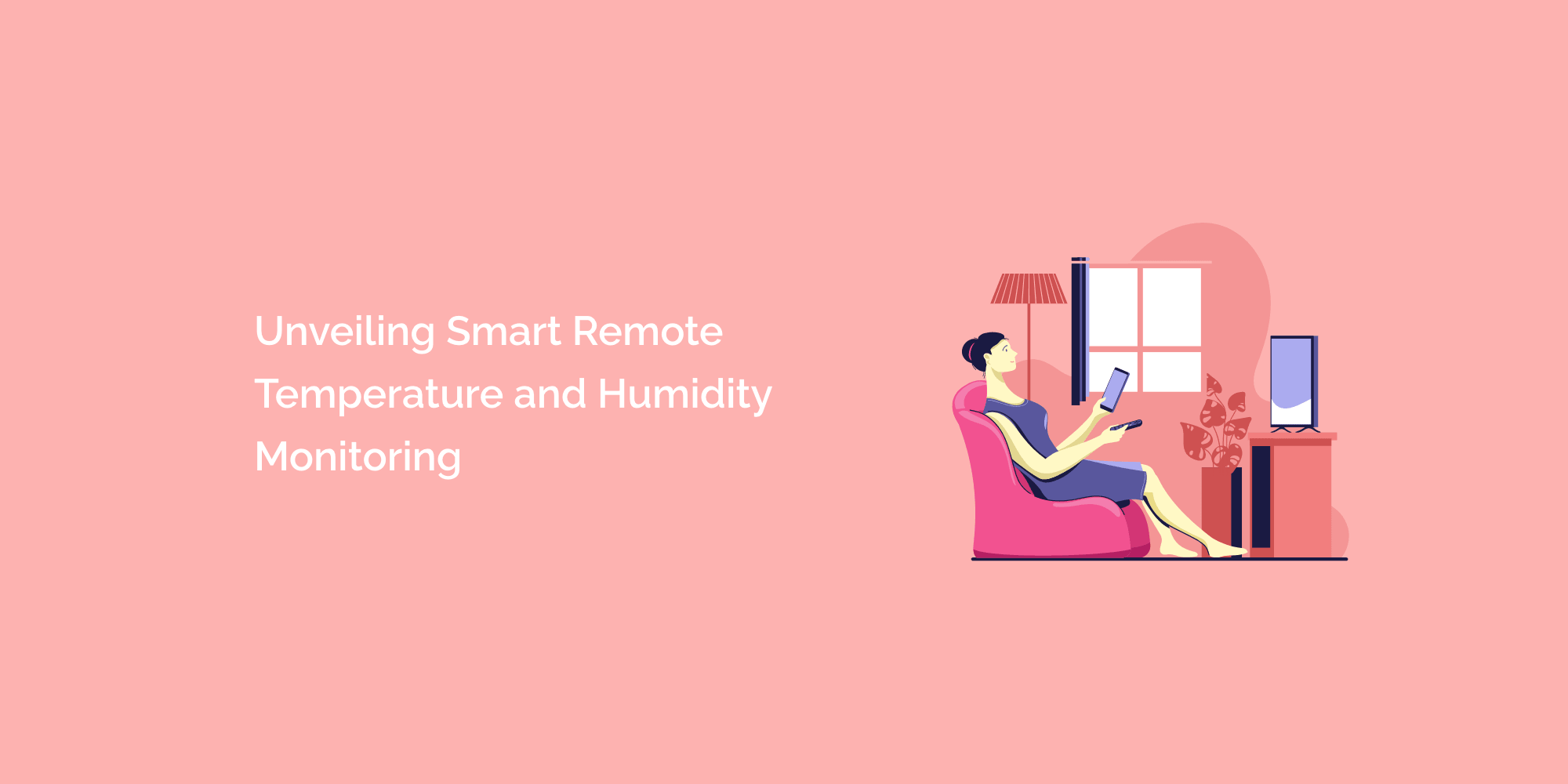In today's fast-paced world, the integration of smart technology into our daily lives has become increasingly prevalent. From smartphones that connect us globally to smart appliances that automate household tasks, technology has reshaped the way we interact with our surroundings.
One such technological advancement that has gained significant traction is smart remote temperature and humidity monitoring. This innovation offers not only convenience but also plays a vital role in ensuring optimal comfort and safety in various settings.
In this comprehensive guide, we will delve into the intricacies of smart remote temperature and humidity monitoring, exploring its benefits, applications, and the future it holds.
Understanding the Basics: Temperature and Humidity
Before we dive into the world of smart remote monitoring, it's essential to grasp the significance of temperature and humidity in our lives. Temperature and humidity are two fundamental environmental factors that impact our well-being, comfort, and even the preservation of valuables.
Temperature:
Temperature is the measure of how hot or cold an object or environment is. Maintaining an appropriate temperature is crucial for our comfort and productivity. Whether it's the ideal room temperature for a good night's sleep or maintaining optimal conditions for delicate equipment, temperature control plays a critical role.
Humidity:
Humidity refers to the amount of moisture present in the air. It affects our perception of temperature; high humidity can make the air feel warmer, while low humidity can lead to discomfort, dry skin, and even potential health issues. Maintaining balanced humidity levels is especially important in environments like homes, offices, and storage facilities.
The Emergence of Smart Remote Monitoring
Traditional methods of temperature and humidity monitoring involved manual readings using analog devices or standalone digital meters. These methods were limited by their inability to provide real-time data, making it difficult to identify sudden fluctuations or anomalies. This is where smart remote monitoring comes into play.
What is Smart Remote Monitoring?
Smart remote temperature and humidity monitoring involves the use of advanced sensor technology and internet connectivity to provide real-time data on temperature and humidity levels. These sensors are typically wireless and can be placed in various locations, enabling users to monitor conditions remotely through their smartphones, tablets, or computers.
Benefits of Smart Remote Monitoring
-
Real-Time Awareness: One of the most significant advantages of smart remote monitoring is the ability to access real-time data. This means you can stay informed about temperature and humidity conditions even when you're not physically present at the monitored location. This is particularly useful for homeowners, business owners, and facility managers who need to ensure optimal conditions.
-
Early Detection of Issues: Fluctuations in temperature and humidity can lead to various problems. For instance, a sudden rise in temperature could indicate a malfunctioning HVAC system, while high humidity levels could lead to mold growth. With smart remote monitoring, you can receive alerts as soon as any abnormal conditions are detected, allowing you to address issues promptly.
-
Energy Efficiency: Smart monitoring systems can also contribute to energy efficiency. By keeping track of temperature trends, you can adjust heating and cooling systems more effectively, reducing energy waste and utility costs.
-
Data Logging and Analysis: Smart remote monitoring systems often come with data logging features, allowing you to track temperature and humidity trends over time. This data can be valuable for analysis, helping you make informed decisions about climate control and resource allocation.
-
Peace of Mind: Whether you're a pet owner concerned about your furry friend's comfort or a business owner responsible for maintaining optimal conditions in a storage facility, smart remote monitoring provides peace of mind. You can rest assured knowing that you'll be alerted if conditions deviate from the desired range.
Applications of Smart Remote Monitoring
-
Home Environment: Smart remote monitoring is incredibly useful for homeowners. Whether you're monitoring your baby's nursery, wine cellar, or indoor plants, having real-time data on temperature and humidity ensures that your loved ones and valuables are in a comfortable environment.
-
Businesses: From restaurants to laboratories, businesses across various industries rely on specific temperature and humidity conditions. Smart monitoring systems help maintain compliance with regulations, prevent spoilage of goods, and ensure the integrity of sensitive equipment.
-
Healthcare: In healthcare settings, maintaining proper temperature and humidity is essential for patient comfort and equipment storage. Smart remote monitoring can help healthcare facilities ensure optimal conditions in patient rooms, operating theaters, and storage areas for medications and medical supplies.
-
Food Industry: Restaurants, cafes, and food storage facilities benefit from smart monitoring to prevent food spoilage and ensure food safety. With real-time alerts, businesses can take immediate action to avoid losses due to improper storage conditions.
-
Museums and Archives: Artifacts, documents, and valuable items in museums and archives require controlled environments to prevent deterioration. Smart remote monitoring helps curators maintain ideal conditions for preserving these treasures.
Looking Ahead: The Future of Smart Remote Monitoring
As technology continues to advance, the capabilities of smart remote monitoring are likely to expand even further. Integration with artificial intelligence and machine learning algorithms could enable these systems to predict fluctuations and offer proactive solutions. Additionally, interoperability with other smart devices could create a seamless network of interconnected systems working together to enhance our lives.
Conclusion
In conclusion, the advent of smart remote temperature and humidity monitoring marks a significant leap forward in our ability to ensure comfort, safety, and efficient resource management. From homes to industries, the applications are vast and the benefits are tangible.
By providing real-time data, early alerts, and data analysis, these systems empower us to take control of our environment in ways that were previously unimaginable. As we embrace this technology, we open doors to a future where our surroundings are optimized for our well-being and peace of mind.








